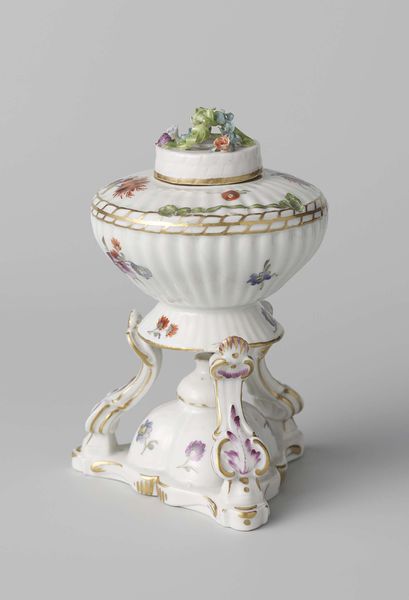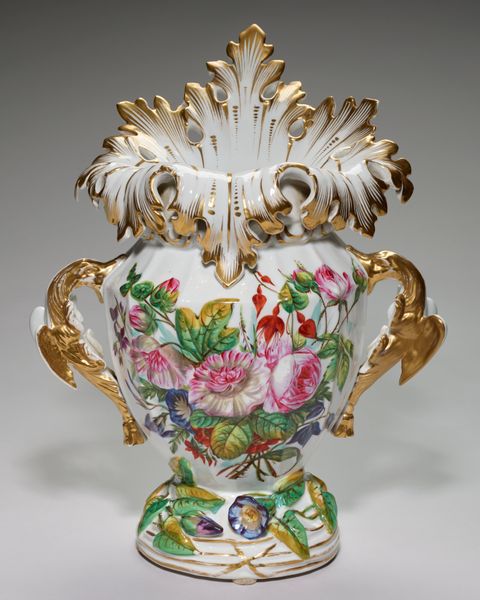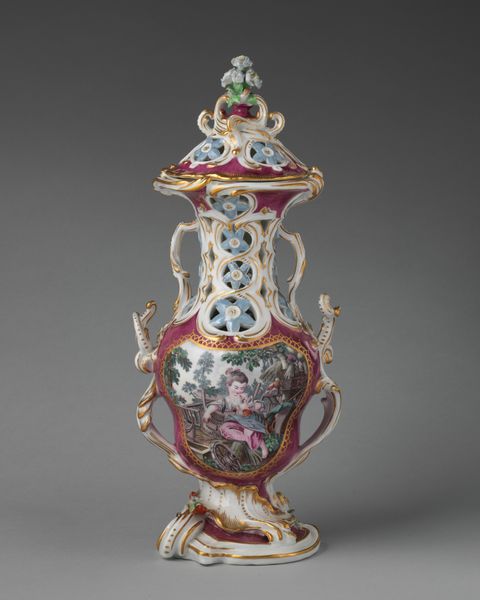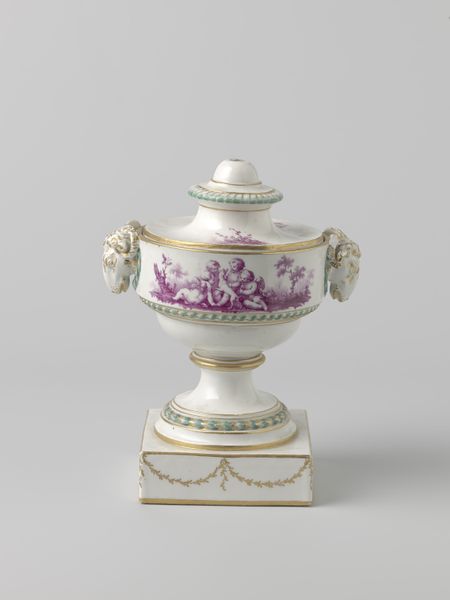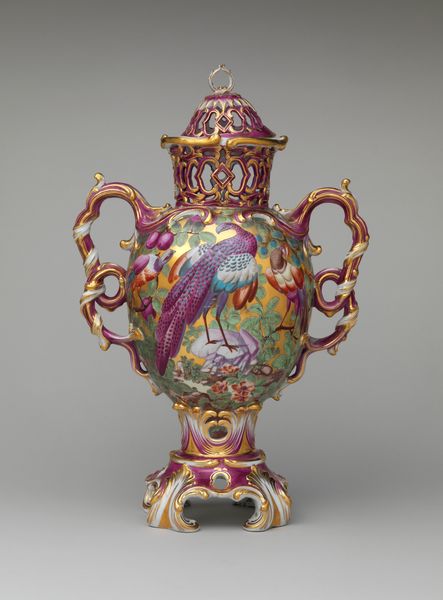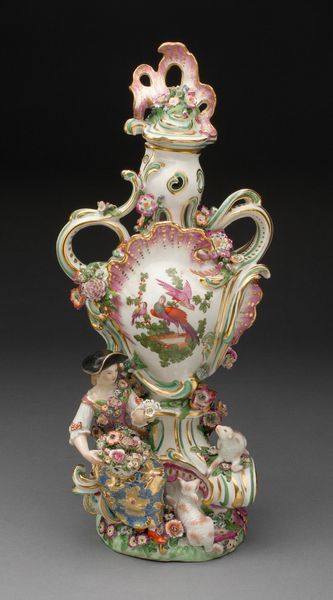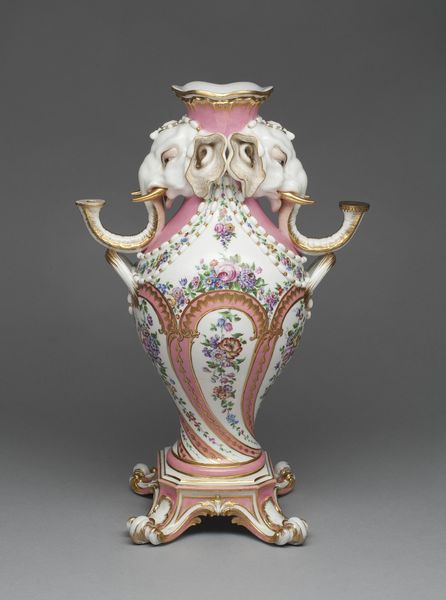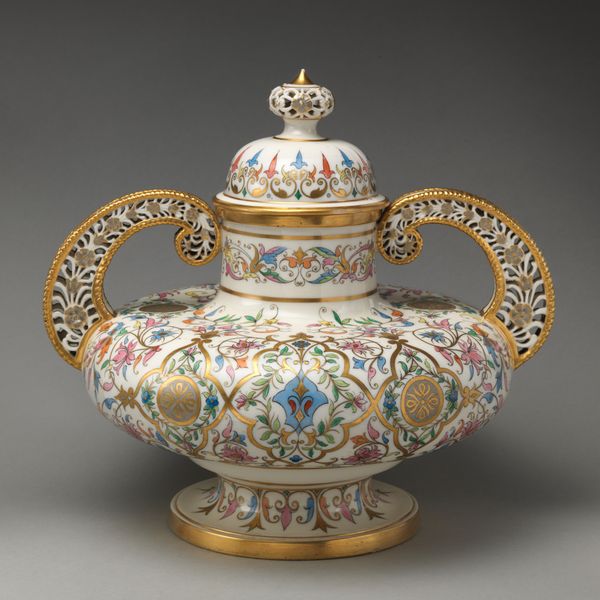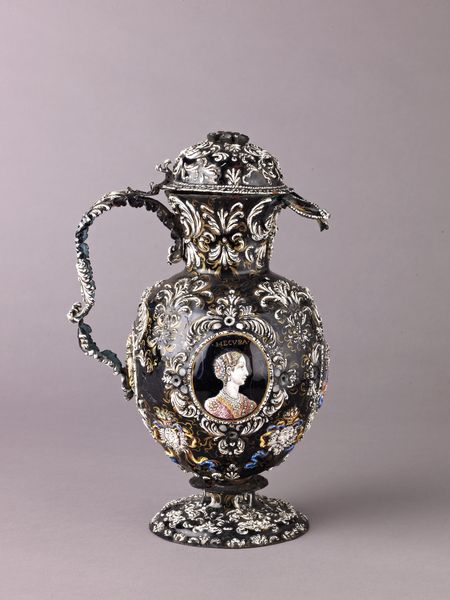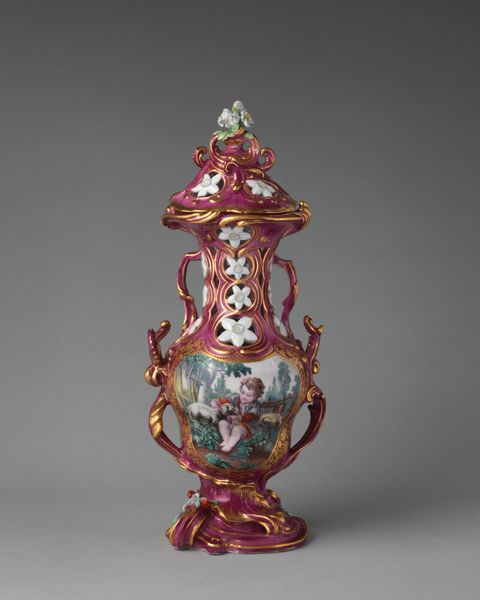
painting, ceramic, porcelain
#
painting
#
landscape
#
ceramic
#
porcelain
#
ceramic
#
genre-painting
#
rococo
Dimensions: height 45.5 cm, width 26 cm, diameter 20.8 cm
Copyright: Rijks Museum: Open Domain
Curator: Allow me to introduce a delightful example of 18th-century craftsmanship: a porcelain teapot and heating stand created by the Königliche Porzellan Manufaktur, dating approximately from 1750 to 1774. The set includes detailed painting of landscape and genre scenes in the rococo style. Editor: The first thing that strikes me is how precious and delicate this piece looks. The porcelain has such a creamy translucence, and those gilt flourishes feel intentionally opulent. It speaks of a certain social performance. Curator: Precisely. The elaborate nature of the teapot set reflects the cultural significance of tea during that period, particularly among the upper classes in Europe. Porcelain production, especially by royal manufactories like KPM, was a symbol of wealth, status, and refinement. Serving tea was very much a ritualized event. Editor: I notice how the paintings on the teapot itself portray idyllic scenes – people relaxing in nature. And the colors themselves, soft purples, greens… a deliberate construct celebrating leisure and privilege. Is this a conscious reflection of social disparities during the time, a subtle contrast to the lived experiences of most? Curator: In many ways, yes. The scenes of leisure acted as both aspiration and as a kind of validation for the societal structures that allowed such lifestyles to flourish. Rococo art often glossed over social inequalities, presenting an idealized version of life that obscured the realities for those outside the aristocracy. Editor: It's fascinating how something as simple as a teapot can hold so much layered cultural meaning. You’ve highlighted how it's not just about drinking tea; it's about embodying and projecting a very particular image. Curator: Indeed, and even the material itself, the porcelain, reflects global trade networks and colonial exploitation. The demand for porcelain fueled the search for resources and trade routes, which often had devastating consequences for colonized regions. Editor: Examining an object like this really does give us an entry point into larger historical forces. The exquisite details hide complex, uncomfortable truths about power, wealth, and representation. Curator: Thinking about art and its relationship to society can sometimes mean sitting with that tension. It encourages a deeper reflection, connecting our own contemporary moment with complex historical forces. Editor: I will never look at a teacup the same way again.
Comments
rijksmuseum over 2 years ago
⋮
This teapot and heating stand were produced by the Königliche Porzellan Manufaktur, the porcelain factory of King Frederick II of Prussia in Berlin. The model, however, was older and had been designed by Johann Ernst Gotzowsky, the factory’s original founder. Due to financial difficulties he had been forced to sell his business to the king in 1763. The slender shape of the teapot’s handle recalls silver teapots.
Join the conversation
Join millions of artists and users on Artera today and experience the ultimate creative platform.
